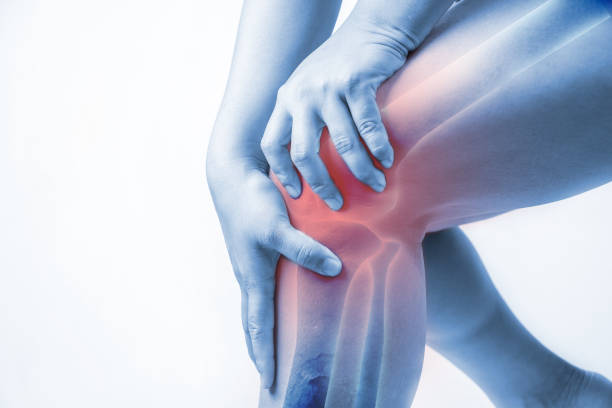
Patella Straps: Are They Effective For Knee Issues?
You have to admit the knee joint experiences a variety of forces and actions in sports competition and training. Similar to the shoulder joint, the knees are vulnerable to wear, tear, and thus injury, especially if you have been active for a number of years. Name a sport where using the knees (legs) is not important. There are very few, if any.

The sensible approach to knee protection is strength training, safe performance of sport-related drills, and the use of a progressive-stress conditioning plan. The disheartening reality is, you can take all these proper precautions, but still succumb to knee issues.
A common knee malady many experience is patella-femoral pain syndrome (PFPS).PFPS is an overuse injury caused by constant contact of the underside surface of the patella (knee cap) with the femur (thigh bone). Runners, basketball players, and females with an increased Q-angle (“knock-knees”) are some who are more susceptible to PFPS. Repeated weight-bearing activities, running, jumping, ascending and descending stairs, and even sitting for an extended period can aggravate the syndrome.
It is important to know that the patella does not solely translate “up and down” during knee movement. It also tilts and rotates, which means there are many points of contact between the patella and the femur. Therefore, lateral (outward) patella tracking due to abnormal pulling from the lateral quadriceps can become an issue. Additionally, short- and long-term patellar partial dislocation and repetitive compressive or shearing forces increase the occurrence of PFPS.
Some athletes and trainees who have PFPS use a type of bracing mechanism to lend support and stability. Bracing the knee(s) can also offer mental confidence so the fear of re-injury is diminished. However, the mechanisms by which braces minimize knee pain are not fully understood.
One type of bracing device is the patellar strap. The patellar strap is less bulky than conventional full-knee covering braces - a “minimalist” approach to knee bracing. A study in the Journal of Strength and Conditioning Research sought to determine the effectiveness of these smaller straps. They used infra-patellar (below the patella) and supra-patellar (above the patella) straps to study quadriceps activity and onset timing of the bodyweight squat. Past research has shown infra-patellar straps are questionable regarding PFPS and supra-patellar straps have virtually no research to support their use.
In the study, quadriceps muscle activity and onset timing parameters were measured with surface electromyography (EMG) on 19 healthy subjects during the bodyweight squat exercise. Four different knee-strapping conditions were studied: infra-, supra-, both, and none. The findings:
- No differences in normalized mean or peak EMG activity in any part of the quadriceps were found.
- The onset timing of the vastus lateralis (VL)was significantly delayed when using an infra-patellar strap or both straps, and slightly delayed when using a supra-patellar strap as compared to the no-strap (control) condition.
- No differences in the vastus medialis oblique (VMO)onset timing or VMO-VL onset timing difference were found among the strapping conditions, although an improvement in timing was noted with the supra-patellar condition.
The researchers concluded there is some evidence that using infra-patellar straps, supra-patellar straps, or both straps improves quadriceps muscle timing imbalances by delaying VL onset. Because the largest delay in VL onset occurred when wearing both straps, the combined use of an infra-patellar and supra-patellar strap may be the most logical option for addressing patella-femoral pain. This seems practical because knee straps - unlike larger braces - are less expensive, less restrictive, and can be easily fitted to any knee.
Based on the study results it is encouraging that knee straps may have potential benefits. This merits further study in the attempt to minimize patella-femoral pain syndrome. My concluding advice would be to first try to eliminate any knee issues by taking these precautions from day one by:
- Strengthen the knees.
- Use orthopedically-safe sport-related drills.
- Train week-to-week using a progressive plan.
If you happen to experience PFPS, use both the supra- and infra-patellar straps to minimize pain, but understand it is simply masking the pain and not addressing the underlying cause of overuse. In that case, follow your physician’s standard protocol, which usually involves rest, rehabilitation exercises, and a gradual return to normal activities.
https://www.wodarmour.in/collections/gear-and-accessories/products/silicon-knee-strap
Article Credit :- Tom Calso
Coach
Strength And conditioning
Breaking muscles


